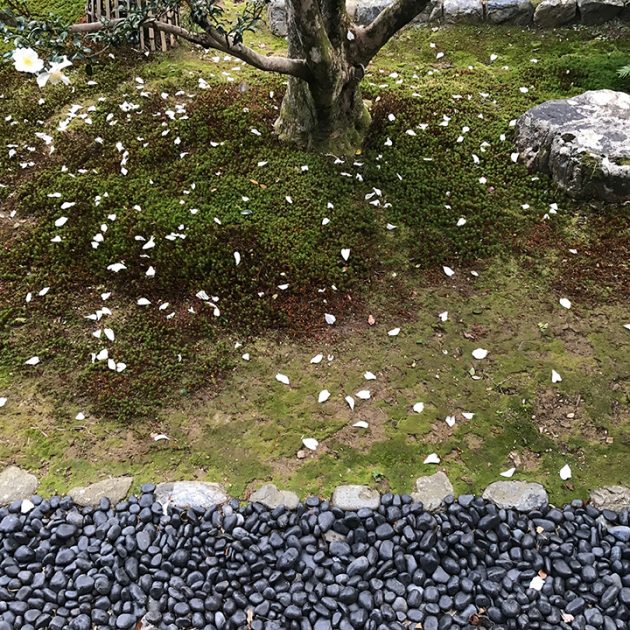
Mark Hovane
In his “Essay of Gardens” first published in 1625, Francis Bacon wrote:
God Almighty planted a garden and indeed, it is the purest of human pleasures; it is the greatest refreshment to the spirits of man.
The garden is arguably more relevant and essential today than ever before. We live in a globalized world of instant gratification and season-less possibilities. Environmental destruction and climate change are proceeding at an unprecedented rate. We have become disorientated and detached from the natural order of things. In our technology-obsessed world, human connection with natural places has become even more imperative to our mental and physical equilibrium as individuals, communities and society as a whole. There is a significant and growing body of global research documenting the power of nature to heal and relax us, restoring physical, cognitive and emotional balance.
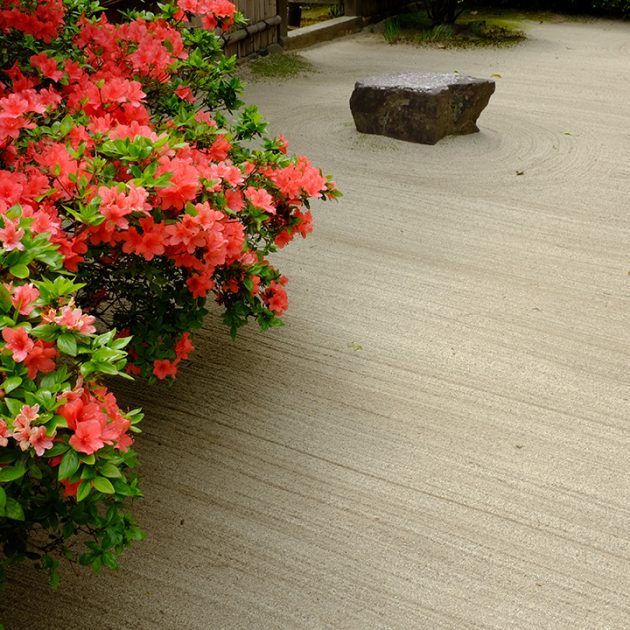
Humans created gardens to condense the beauty of nature into a limited space which could easily be accessed as part of everyday life. Gardens contain nature but the distressing and challenging elements are removed. Furthermore, a garden is raw nature tamed and shaped by the human hand. German architect and garden scholar Gunther Nitzschke contends:
The garden could be said to stand at the crossroads of nature and culture, of matter and consciousness. It is neither one nor the other; it discloses both in the form of human art. 1
Renaissance humanist Sir Thomas More said:
The many great gardens of the world, of literature and poetry, of painting and music, of religion and architecture, all make the point as clear as possible: the soul cannot thrive in the absence of a garden. If you don’t want paradise you are not human, and if you are not human you don’t have a soul.
The idea of a “healing garden” is both ancient and modern. The term “therapeutic landscape” has recently come to the forefront in the field of landscape architecture, however these “restorative spaces” are not new concepts and have in fact been implemented for millennia. Persian gardens dating back to the sixth century B.C helped connect individuals with Deity and to heavenly glory. They were spaces designed to provide rest and encourage contemplation. Similarly restorative spaces were evident in medieval European monastery cloisters as well as Japanese Zen temples.
Actually, Japanese gardens in general have had religious underpinnings since the earliest times from both the indigenous Shinto belief system as well as from the later cultural import of Buddhism. Sacred, otherworldly and extraordinary, they were even written about in Japanese mythology such as the Nihon Shoki. Traditionally the Japanese believed that natural elements of nature were manifestations of god spirits called kami. These spirits were thought to temporarily reside in mountains, rivers, trees and stones. Later as Zen Buddhism from China took hold in the twelfth century, many gardens were constructed within temple precincts to provide spaces for contemplation and stillness, removed from the stresses of the secular world. Their aim was to reduce the elements of nature to symbolic representation to present a minimalist essence. Zen is based on the practice of seated meditation as a core spiritual discipline with the aim of connecting the individual to the larger cosmos. The gardens found in these temples assisted the individual to escape worldly afflictions and strengthen spiritual resolve.
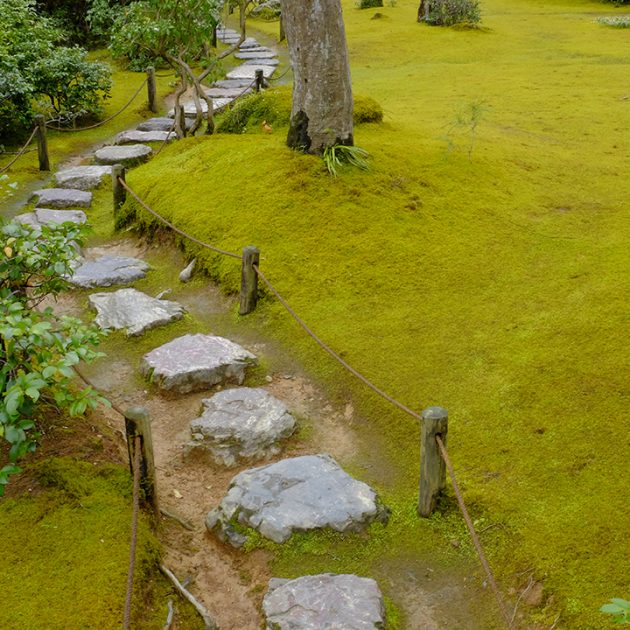
The practice of garden-making in Japan has a long history and over the last 1500 years, there have been many changes in perceptions of what constitutes a garden. Although Japanese gardens have been influenced and inspired by the introduction of new religions and philosophies, we can surmise that there has always been a spiritual dimension to Japanese landscaped space.
As transformative healing spaces, the most relevant Japanese gardens are those which had their origins in medieval Japan. Highly influenced by Zen philosophy; the dry landscape karesansui gardens were usually located in Zen temples, typically featuring white sand/gravel as a base cover to metaphorically represent the element of water. Larger stones placed within this expanse of raked ground represented mountains. These gardens were completed with minimal vegetal material. The other highly symbolic, contemplative spaces were tea gardens, roji, which developed towards the end of the sixteenth century, usually surrounding a tea house or hut, designed to prepare the guests spiritually as they moved slowly towards the tea event. Later small courtyard gardens, tsuboniwa, appeared in merchant townhouses, machiya, to represent a condensed version of a tea garden. Each of these different types of garden had a raison d’être of focusing attention inwards. Thus it can be seen that only with the rise of Zen in medieval Japan did gardens become so deliberately symbolic of the human quest for inner understanding. From these historical principles, it becomes clear that Japanese gardens are potent opportunities for self-realization, tranquility and peace. Buddhism has investigated the garden as a tool for religious teaching, practice and contemplation for centuries. Garden maker and twelfth-century Zen priest Muso Kokushi observed:
He who distinguishes between the garden and practice cannot be said to have found the Way.
In Japan, the very act of tending a garden is also a form of Buddhist practice. It implies a commitment to nurturing a daily habit that cultivates our own inner healing and spiritual growth. The garden invites humility and rewards compassionate and patient maintenance. In fact the meticulous care required of a Japanese garden in particular, distinguishes it from many other cultures’ landscaped spaces. Partially this is a response to the extremely limited physical space that necessitates a delicate balance of scaled relationships between garden elements. It is a well known rule for traditional gardeners that a great garden relies 40% on design and 60% on maintenance. Every element in the Japanese garden from the shape of the pruned pine trees to the careful placement of stepping stones has intention and is specifically designed to cultivate nuanced awareness. The contrast between what is placed and what is left blank, brings to life a pictorial space that leaves room for our imagination. Symbolism and metaphor in the garden also offer powerful tools to help humans reconcile their own lives and relationships to both society and the larger forces of nature. The American garden scholar Kendall Brown argues that “The opportunity for direct engagement with nature is what makes all gardens compelling but, as Japanese gardens function so effectively as philosophical and physical microcosms, their power is even stronger.” 2
In contrast to many Western gardens whose aim is primarily recreational, Japanese gardens can be said to be “hyper-potentiated to effect change within the psyche of the visitor.” The modernist architect and theorist Garrett Eckbo recognized that “Japanese gardens are probably the most highly refined and completely developed garden conceptions our world culture has known. They are perfectly suited as spaces for withdrawal, repose and as places where one seeks order in a disorderly world”. 3
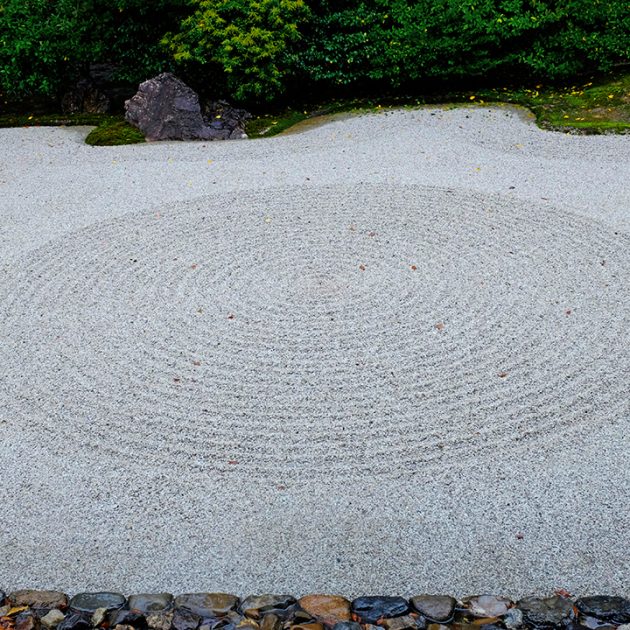
Japanese gardens employ centuries of wisdom about sensory and cognitive experience of space and nature’s inherent energies. Sophisticated spatial modulation is one of the defining characteristics of Japanese landscaped space. Central as a design technique is the concept of ma, a very complex idea that permeates almost every aspect of Japanese culture. The word ma has no literal translation but can be referred to as space, place or void. Ma can be expressed spatially, temporally, socially and as a combination of any of these. The manipulation of ma is one of the most compelling and complex aspects of the Japanese garden. As a positive design element, it also has a precedent in Chinese landscape painting. Empty space enlivens and potentiates the objects it resides between leading to a dynamic tension that is paradoxically calming. It creates an opportunity in the imagination of the human mind that experiences these elements to enter the field and complete the work of art. A sense of place emerges with an emphasis on interval that creates a simultaneous awareness of form and non-form. In assessing a garden’s design, renowned contemporary garden designer and Zen Buddhist priest Shunmyo Masuno asks: “Has the space in the garden been properly attended to? Is the overall atmosphere one of harmony and yet harmony which still possesses a “robust tension?” 4
It is the pared-down tension between the garden’s elements that contributes so strongly to the healing energy of the garden.To get philosophical, the inclusion of the formless, of eternity, of nothingness is what gives great art depth. Zen scholar Shinichi Hisamatsu has described this requirement for the inclusion of “background” or “depth” in Japanese art as “subtle profundity” or “deep reserve.”5 The result of this profundity is an inexhaustibility which allows the viewer to come back to the work of art again and again and each time be rewarded with a freshness which reveals another aspect which had not been appreciated before.
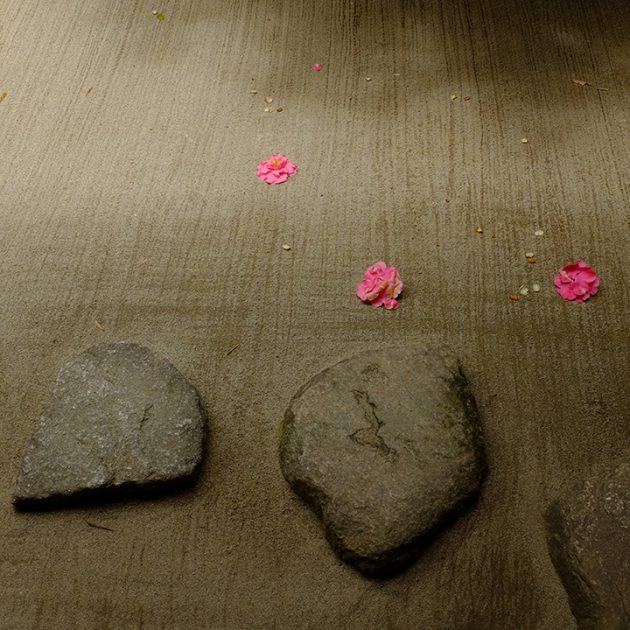
Over centuries, the techniques of Japanese garden design were developed to direct one’s experience in subtle but specific ways; to lessen preoccupation with the self and foster an increased awareness of nature and our relation to it. Japanese gardens have ma that is physical, visual and temporal. Above all, ma must be felt viscerally. Ma should be an experience that energizes our whole being. When this occurs, we are experiencing a space that cannot be measured. What results is the freedom of an imaginative space that we as visitors co-create in the garden. Thus using an analogy from Japanese tea ceremony: if the garden acts as “host”, it becomes clear that ma extends an invitation to the visitor as “guest” to accept the “hospitality” of the garden as a work of art. There is an etiquette to being a good guest. According to iconoclastic twentieth-century garden master Shigemori Mirei, “A viewer must acquire a proper attitude for viewing.”
There is a very deliberate order and conduct which is necessary to fully experience the Japanese garden as an immersive art work in progress. Exquisitely choreographed pathways, gates and water features are all consciously designed to slow the visitor down, allowing a divesting of the outside world to encounter timeless space. Japanese gardens need time to work their magic and draw the visitor in. A Japanese garden is a sensitively managed visual environment, always at the centre of which is the visitor’s experience. A fundamental design concern has always been the question of exactly how will the visitor interact with the space?
This very particular way in which the garden engages the visitor is one of the key elements that distinguishes it as a healing space. When asked for advice on how to view a Japanese garden, the modern twentieth-century garden master Kinsaku Nakane answered: “With a detached gaze and in a state of total receptivity.”
Above all a garden is an invitation to aesthetic, mental and sensory experience. As visitors, we cannot “DO” a garden, we must “BE” in it.
For a garden to make the most effective use of the very limited space, the visitor needs to be drawn into the garden and actually become part of the experience as a whole. This intensity of active participation contrasts with many Western-style gardens that tend to be more concerned with display and entertainment rather than deep engagement.
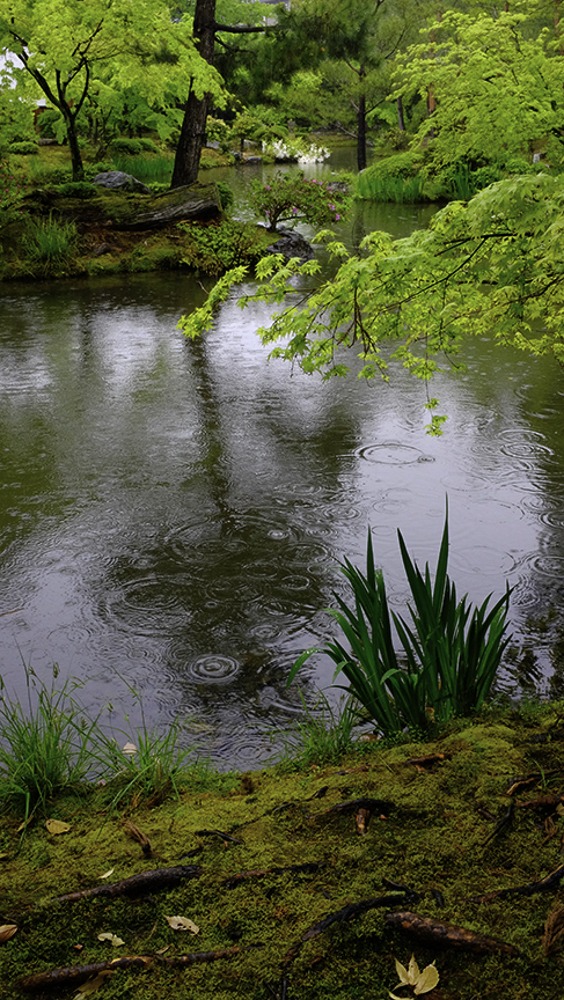
As one enters the garden, there is a break with everyday life and the beginning of a multi-dimensional landscape of possibilities. It is as though we were given new eyes with which to see the world. An old Zen teaching posits that we start to “see with our ears and listen with our eyes”. Being in the garden for an extended period, we start to notice the nuanced green palette of the plants more vividly. The dappled patterns of sunlight for which the Japanese ascribe the poetic word komorebi creates a chiaroscuro-like dark brightness. The silence of the garden only serves to heighten each and every sound. Over time, we have been lifted out of the mundane to be placed in a heightened reality. One is not only in the garden but now also a part of it, a visitor no more. A merging of the self with nature. To feel at one with the garden is to become the garden. Twentieth-century Japanese philosopher Kitaro Nishida describes Japanese culture’s most characteristic feature as moving from subject to object.
“To say that we know a thing simply means that the self unites with it. When one sees a flower, the self has become the flower.” 6
What we see and take from the garden depends on ourselves, on our willingness to enter a space beyond beauty; our surrender allows us to see with our heart.
My circumambulation thus complete,
With fresh serenity I take my seat
Upon the verandah-step; in silence gaze
At stones and sand that shimmer in a haze
Of brightness through the sultry atmosphere;
Until their contemplation empties thought
And space becomes a calm and conscious blaze.
At once myself and garden disappear
Into its boundless circle, centred here
In evanescent beings, lightly buoyed
Like summer clouds amid the formless Void
Beyond duality: both infinite Nought,
And fifteen stones within a gravelled court. 7
NOTES
1 Gunther Nitzschke. Japanese Gardens (Taschen 1999)
2 Kendall Brown. Visionary Landscapes (Tuttle 2017)
3 Garrett Eckbo in Kendall Brown, Visionary Landscapes (Tuttle 2017)
4 Shunmyo Masuno. Landscapes in the Spirit of Zen: A Collection of the Work of Shunmyo Masuno. Process Architecture 1995
5 Shin’ichi Hisamatsu. Zen and the Fine Arts, trans. G. Tokiwa
(Kodansha International 1982)
6 Kitaro Nishida. Intelligibility and the Philosophy of Nothingness: Three Philosophical Essays in Robert E Carter, The Japanese Arts and Self Cultivation (SUNY Press 2008)
7 Harold Stewart. By the Old Walls of Kyoto (Weatherhill 1981)

MARK HOVANE curates Kyoto Garden Experience to share Japan’s
rich landscape heritage with garden lovers around the world. Long term
resident of Kyoto, originally from Australia, he has been fascinated by
empty spaces since childhood. www.kyotogardenexperience.com
ALLAN MANDELL began his love affair with the gardens of Kyoto 30
years ago, and this led to a career as a professional garden photographer.
He now lives in the forest with his wife on an island off the west coast
of Canada, and he returns to Kyoto twice each year to lead tours to his
favourite garden sites. www.kyotogardentour.com